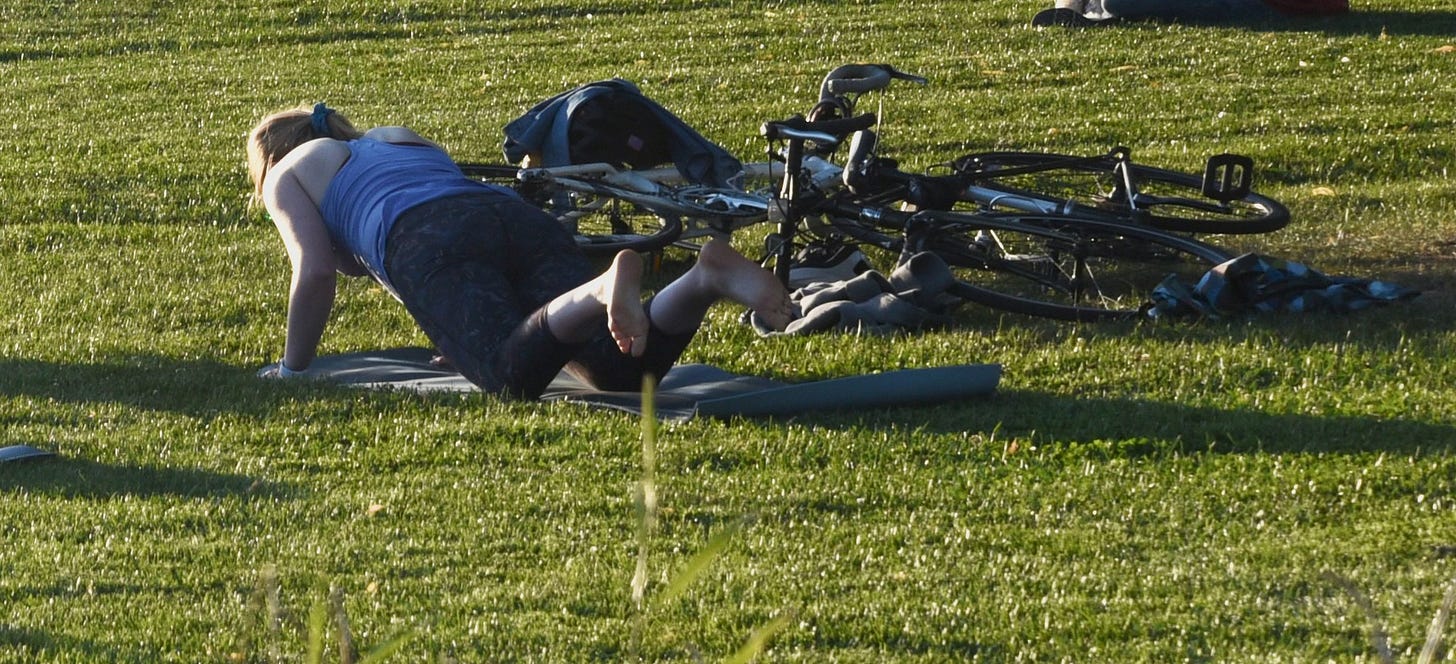Ugh, I'm Miserable When I Try to Exercise
Here's how you can get active and minimize your discomfort.
Welcome back to Lazybones.substack.com. After a not-so-brief hiatus (3 years) I’ll be sharing psychological insights and techniques to help you (or a friend) overcome the friction preventing a more active lifestyle. Also, I’ll discuss recent research that will help you make sense of all the conflicting advice about diet and weight control.
If you haven’t subscribed click on the button and join for free. Also, please share Lazybones with anyone who may be thinking about becoming more active or is concerned about their weight but can’t seem to get motivated.
“I know I should do it, but exercising makes me feel miserable. I’m out of breath, hot and sweaty, and it just hurts.” Does this sound familiar?
You’re not alone; a study of 3,500 adults who used a fitness tracker found that less than four percent actually met the goal of 150 minutes of moderate activity per week.
Aside from health, what are your motivations for exercising? A recent study found that men exercise to improve their self-image, while women are more likely to be motivated by weight loss or reducing body fat. The findings suggest that there’s a relationship between intrinsic motivation and level of physical activity, but how do you get intrinsically motivated if exercise makes you feel miserable?
Here are a few suggestions to help you overcome your bad feelings about exercise. First, recognize that most habitual exercisers experience some discomfort with their workout. You’ve heard of the good feelings some people feel after going to the gym, but the good feelings are usually after it’s finished, not during the workout.
The trick for you is to limit the discomfort while exercising. Your exercise should be physically challenging, but if you’re really struggling, dial it down. Ease up, go slower, use less weight, take a break, or stop sooner; whatever it takes so that you can feel the effort you’re making but you’re not overwhelmed by it. You’re not being a quitter as long as you complete the exercise and do it again the next time.
To make exercise less unpleasant, it's helpful to pair it with something that you enjoy. Get earbuds so you can listen to music or a favorite podcast. If you’re on a treadmill, watch a video or read something engaging to make the time go by (just set the incline higher if you’re going slower). Give yourself a reward for finishing the workout. For example, you could only watch a favorite program on days that you’ve exercised.
Do the activity with a friend so that you’ll enjoy the companionship. If you set a routine exercise schedule with your friend, you’ll go, even if you don’t feel like doing so. You wouldn’t want to disappoint your friend, would you?
Enjoy your accomplishment. Many meaningful events in your life involve struggle and sacrifice. For example, giving birth, completing a college degree, or serving in the military wasn’t easy. Even when assembling Ikea furniture, you probably experienced discomfort, but you achieved the goal, and now you feel pride in your accomplishment. Think of the pride you’ll feel when you’ve established a routine exercise habit. Also, it may improve your self-concept. Instead of thinking of yourself as “lazy” or unmotivated, you might start seeing yourself as an athlete, a runner, a weight lifter or even a “jock.”
A personal note: After following my own advice I’m still not an athlete, jock, or runner but I do take pride in being a dedicated weight lifter!
Maybe instead of hating exercise, you can dislike it less and take pride in doing it and enjoying its effects.
Reference:
Granero-Jimenez, J., Lopez-Rodriguez, M., Dobarrio-Sanz, I. & Cortes-Rodriguez, E. (2022). Influence of physical exercise on psychological well-being of young adults: A quantitative study. International Journal of Environmental Research and Public Health, doi: 10.3390/ijerph19074282



Nice article, Dr. A, and it's all true!
One other thing that worked for me is that over a period of time I designed a workout that meets my needs, is streamlined, and takes all of 33 minutes. I have an "upper body" section and a "lower body/legs" section, and alternate them MWF and T,Th,Sat. After doing variations of this workout for a few years, I'd definitely say I've "habitualized" it.
Of course, if people are trying to lose weight, most of the "work" needs to be done in the kitchen!
Thanks again for the words of wisdom.